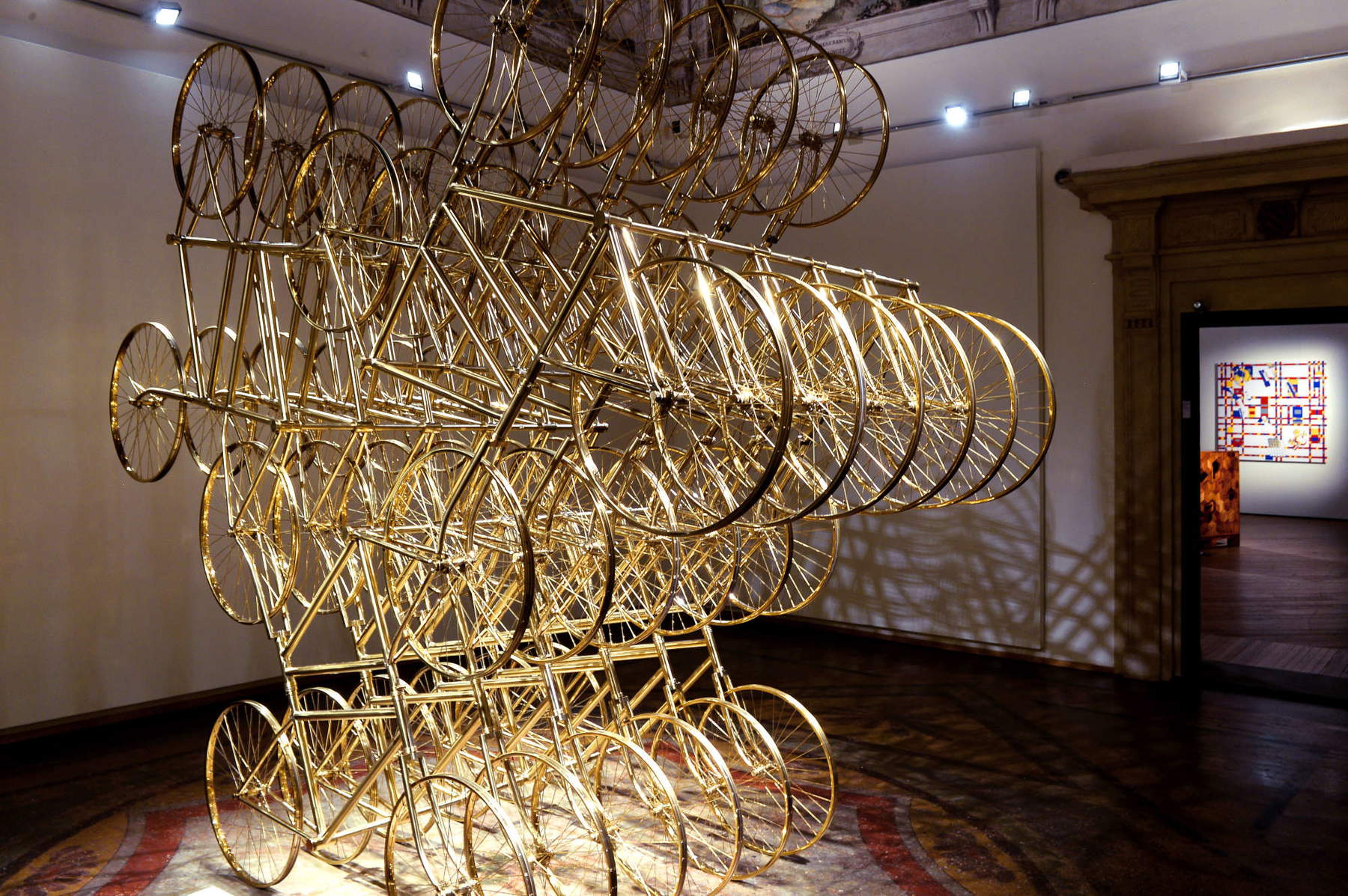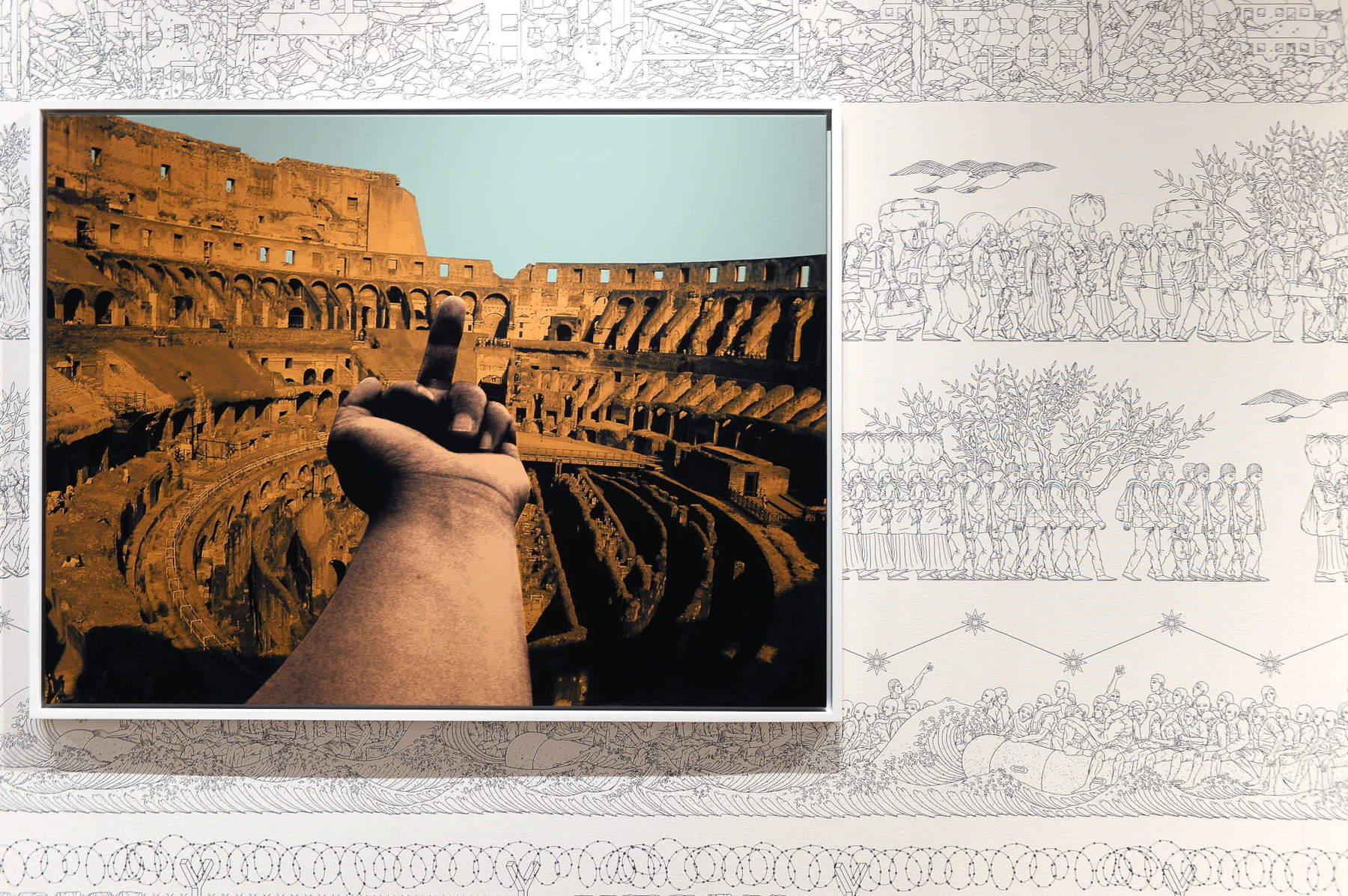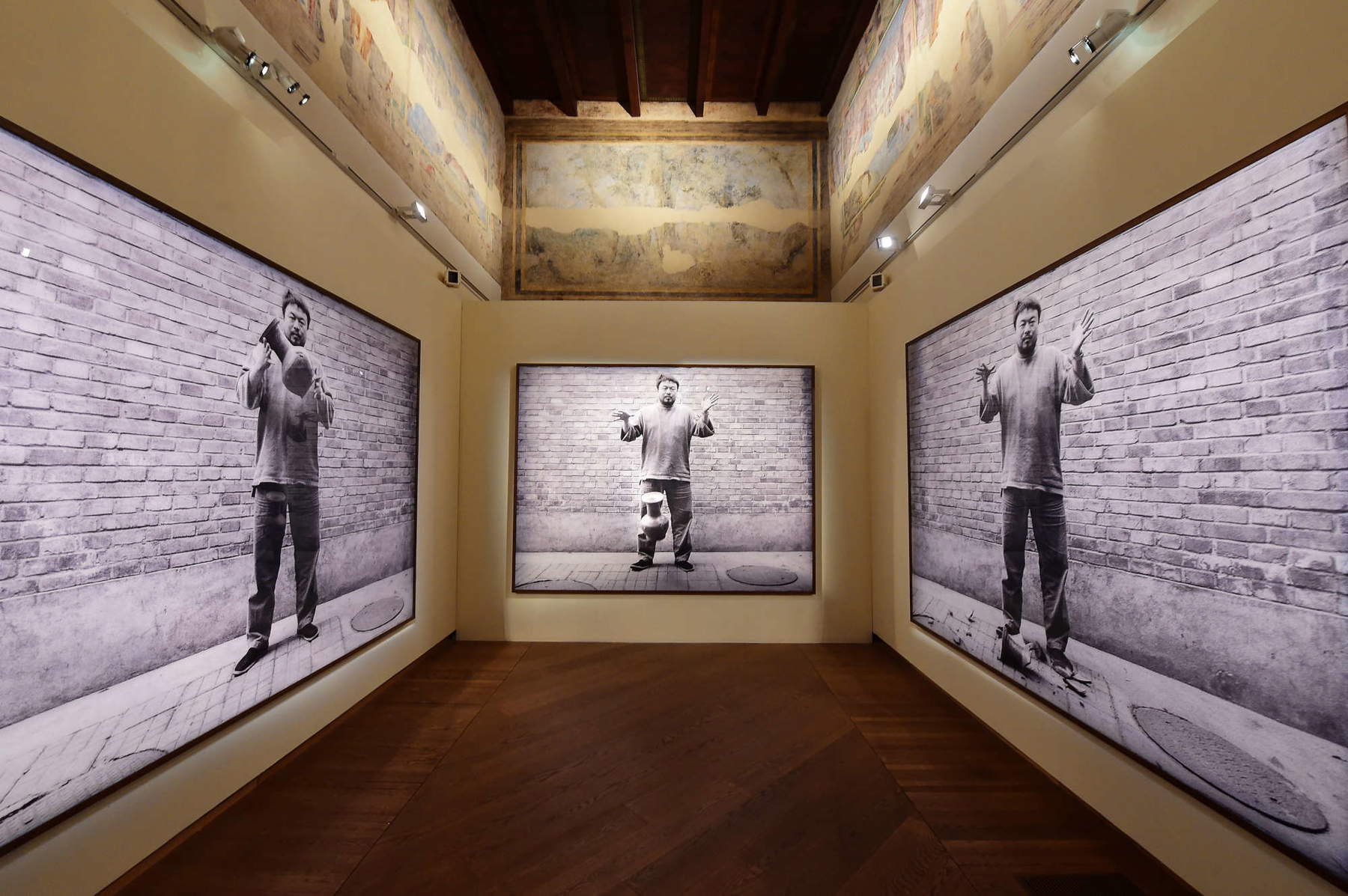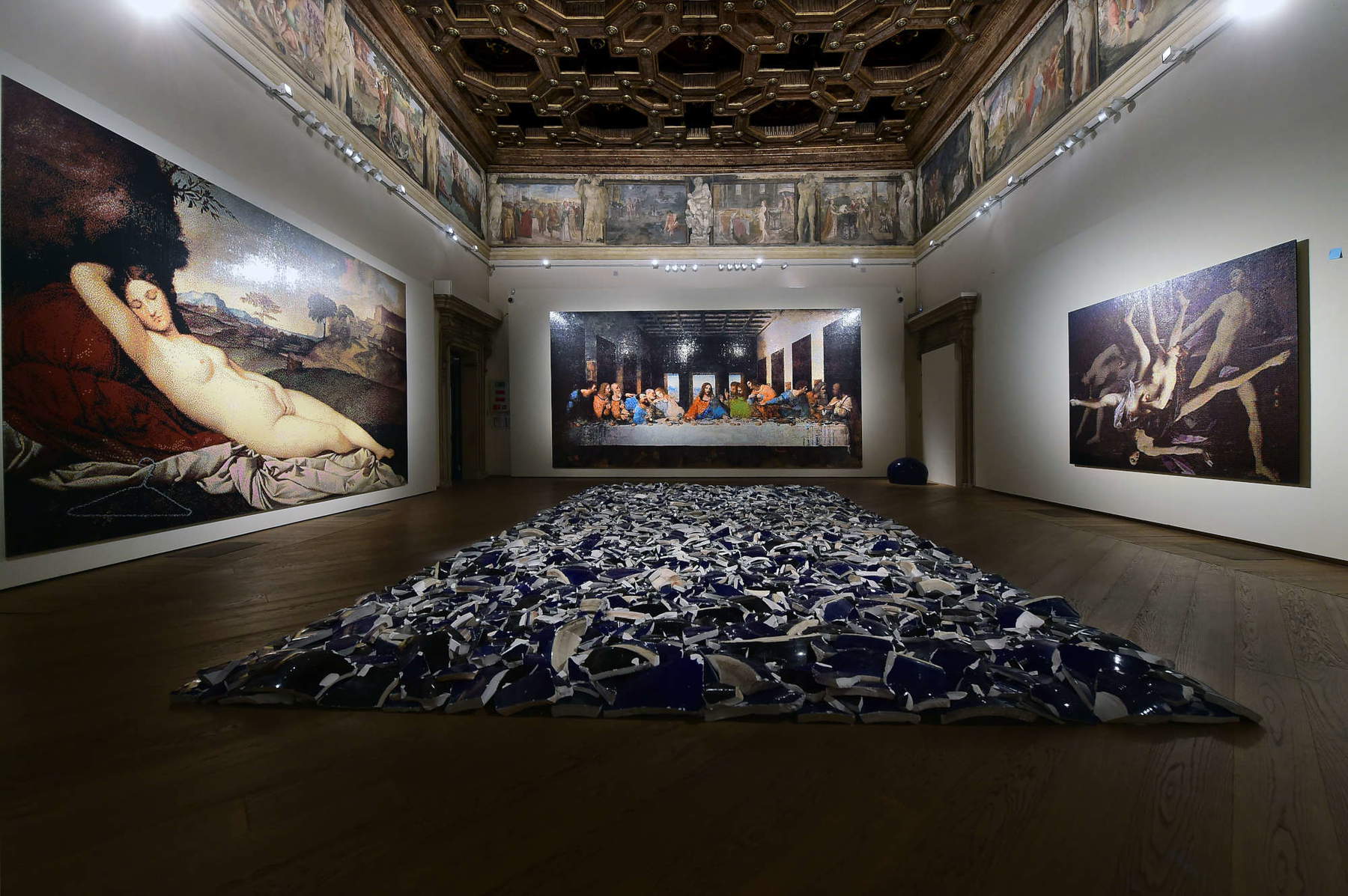Is Ai Weiwei still a current artist? What the exhibition at Palazzo Fava in Bologna is like.
Ai Weiwei’s exhibition is spread over the two floors of Palazzo Fava in Bologna. On the second floor is a varied selection of works by the Chinese artist: from the action of breaking an ancient Ming vase to another Ming vase with the Coca Cola logo painted on it. Then again, under a second display case, the shards of another broken vase. Reflections on the global and capitalist contradictions of Chinese culture and the need to rethink and reset the relationship with an overly unwieldy tradition. This first part of the exhibition appears half-hearted and too tied to reworking the formal and conceptual codes of Western art of the last century. The exhibition does not restore the depth and intensity of the themes the artist claims to be dealing with.
We find the accumulations of bicycles, a symbol of Chinese society, and which in this case are assembled in a stylized manner and all made of golden material. The multitude of people, which characterizes Chinese culture, is rendered coldly, inexorably still, and in a manner too indebted to the reworking of the ready-made with historical artists such as Arman and Marcel Duchamp. In the first part of the exhibition large paintings, made with the famous Lego bricks, definitely take center stage. Here we once again find the reworking of famous paintings from Western history and culture that the artist repurposes with some variations. For example, the Mona Lisa is reproduced with Legos and keeping imprinted the paint of the recent vandalism carried out by some environmentalists. A crutch symbolizing clandestine abortions is inserted in a large painting, or the artist substituting himself for some characters in the scenes depicted in the paintings.


All these reworkings appear weak when compared with the unpredictability with which these same issues, present themselves in our daily lives and in news events. We asked the artist himself directly whether art that wants to deal with some important issues should today limit itself to “representation,” or should also field concrete forms of resistance, on pain of total marginality. Is it enough to represent the Mona Lisa scarred by environmentalists to effectively address the climate problem today? Without even returning the media hype that the actions of the environmentalists themselves have caused in reality? Does reworking predictable pop culture icons mean being an “activist” artist or truly protesting something? When we then know that these same works will become commodities to be sold for hundreds and hundreds of thousands of euros?
If the goal is just “to make people think,” some tremendous news events, such as the babies buried in the bourgeois cottage or the freshness and vitality of environmentalist actions that catch us in our daily lives in completely unpredictable and much more incidental ways are much more effective. In the art of our time, it is no longer enough to represent a problem in order to address it. We live in a complex present in which we are all producers and consumers of an enormous amount of information. This saturated and unpredictable environment makes reality more powerful, meaningful and effective, than any fiction we can find on the pedestal.



On the second floor of Palazzo Fava, the exhibition improves as some issues are addressed more clearly and head-on. Such as when the artist denounced the collapse of a school in China that the Chinese government wanted to hide and cover up. It seems that after this event the artist began to have problems with the Chinese government, leading to his eighty-day detention that culminated in his release. On the second floor the dramatic events of immigration become an innocuous wallpaper decoration, and some war scenes become the motifs for porcelain plates and antique vases.
Interesting in these works how dramatic facts can actually blend into our everyday lives; but again it seems that the contemporary artist always comes a little late to a bombardment of information to which, outside museums we are constantly subjected. Compared to the themes and expectations with which Ai Weiwei’s work is constantly loaded by the national and international art system, the exhibition seems disappointing. Even the famous photos where the artist shows his middle finger toward things and institutions of dominant power appear frankly too naive in addressing complex issues that cannot be resolved with a simple middle finger.
Warning: the translation into English of the original Italian article was created using automatic tools. We undertake to review all articles, but we do not guarantee the total absence of inaccuracies in the translation due to the program. You can find the original by clicking on the ITA button. If you find any mistake,please contact us.



























